What You Need To Know About The Benefits of Rosemary – 5 Incredible Health Benefits and 7 Amazing Therapeutic Uses of Rosemary
The Health Benefits of Rosemary
Overview
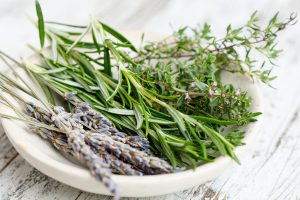
A Brief History of Rosemary
Rosemary (Rosmarinus officinalis) has a rich history that spans thousands of years, with its origins deeply rooted in the Mediterranean region. Known for its aromatic fragrance and versatile uses, rosemary has played a significant role in culinary, medicinal, and cultural contexts throughout history. Let’s explores the fascinating journey of rosemary from ancient times to the present day.
Ancient Civilizations
Rosemary was highly valued by ancient civilizations, including the Egyptians, Greeks, and Romans. Each culture utilized the herb for its aromatic and medicinal properties.
- Ancient Egypt: In Egypt, this herb was used in burial rituals. It was placed in tombs as a symbol of remembrance and protection for the deceased. The Egyptians believed rosemary could purify the soul and ward off evil spirits.
- Ancient Greece and Rome: The Greeks and Romans revered rosemary for its cognitive benefits. Greek scholars and students wore garlands of rosemary to enhance memory and concentration during study sessions. In Rome, rosemary was used in religious ceremonies, weddings, and as a symbol of fidelity and love.
Middle Ages
During the Middle Ages, rosemary’s popularity continued to grow, particularly in Europe. It was a staple in monastic gardens, where monks cultivated the herb for its medicinal properties. This herb was believed to strengthen the memory, aid digestion, and protect against the plague.
- Herbal Medicine: This herb was a key ingredient in various medieval herbal remedies. It was used to treat a wide range of ailments, including headaches, muscle pain, and digestive issues. The herb was often infused in wine or used to make poultices and balms.
- Culinary Uses: This herb became an essential culinary herb during this period, used to flavor meats and stews. It was also believed to preserve food and prevent spoilage, making it a valuable addition to medieval kitchens.
Renaissance and Beyond
In the Renaissance era, this herb’s association with memory and learning persisted. The herb was frequently mentioned in literature and art, symbolizing remembrance and fidelity.
- Shakespearean Reference: William Shakespeare famously referenced rosemary in his play “Hamlet,” where Ophelia says, “There’s rosemary, that’s for remembrance.” This line reflects the enduring belief in rosemary’s ability to enhance memory.
- Medicinal Advancements: During the Renaissance, herbalists and physicians expanded their understanding of rosemary’s medicinal properties. The herb was used in various remedies to improve circulation, relieve pain, and treat respiratory conditions.
Modern Times
Today, this herb remains a popular herb in both culinary and medicinal applications. Its essential oil is widely used in aromatherapy, skincare, and natural health products.
- Culinary Uses: Rosemary is a staple in modern kitchens worldwide. It is used to flavor meats, vegetables, and soups, and its distinctive aroma enhances numerous dishes.
- Medicinal Uses: Contemporary research has confirmed many of the traditional uses of rosemary. It is known for its antioxidant, anti-inflammatory, and antimicrobial properties, making it a valuable herb in natural medicine.
- Aromatherapy: Rosemary essential oil is used in aromatherapy to improve mood, enhance cognitive function, and relieve stress. It is also used in massage oils, shampoos, and skincare products for its invigorating scent and therapeutic benefits.
This herb’s rich history, spanning from ancient civilizations to modern times, highlights its enduring significance in various cultural, culinary, and medicinal contexts. This versatile herb continues to be cherished for its numerous benefits and remains a symbol of remembrance and fidelity. Rosemary’s journey through history showcases its versatility and enduring appeal, cementing its place as a cherished herb in both historical and modern contexts.
Health Benefits
Antioxidant Properties
This herb is rich in antioxidants, compounds that help protect the body from oxidative damage caused by free radicals. The primary antioxidants in this herb include rosmarinic acid, carnosic acid, and carnosol. These compounds have been shown to neutralize free radicals and reduce inflammation, which can help prevent chronic diseases such as cancer and heart disease.
- Rosmarinic Acid: Rosmarinic acid is a potent antioxidant that has demonstrated anti-inflammatory, antiviral, and antibacterial properties. Studies have shown that rosmarinic acid can help protect cells from oxidative stress and reduce the risk of chronic diseases.
- Carnosic Acid and Carnosol: These diterpenes are powerful antioxidants found in rosemary. Research indicates that they have neuroprotective effects, which may help in preventing neurodegenerative diseases such as Alzheimer’s and Parkinson’s.
Anti-Inflammatory Effects
Inflammation is a natural response to injury or infection, but chronic inflammation can lead to various health problems, including arthritis, cardiovascular disease, and cancer. This herb contains several anti-inflammatory compounds, including ursolic acid and rosmarinic acid, which can help reduce inflammation.
- Ursolic Acid: This triterpenoid compound has been shown to inhibit the production of inflammatory cytokines, thereby reducing inflammation. Studies suggest that ursolic acid can be beneficial in treating inflammatory conditions such as arthritis.
- Rosmarinic Acid: In addition to its antioxidant properties, rosmarinic acid also exhibits significant anti-inflammatory effects, making it useful in managing conditions like asthma and allergies.
Cognitive Health
This herb has long been associated with memory and cognitive function. The herb contains compounds that may improve brain health and protect against cognitive decline.
- Memory Enhancement: Aromatherapy using rosemary essential oil has been shown to enhance memory and concentration. One study found that participants exposed to rosemary aroma performed better on cognitive tasks compared to those who were not exposed.
- Neuroprotective Effects: The antioxidants in this herb, particularly carnosic acid, have neuroprotective properties that can help protect the brain from oxidative damage and support overall cognitive health.
Antimicrobial Activity
Rosemary has natural antimicrobial properties, which can help fight off infections and support overall health. The essential oil of rosemary contains compounds such as cineole and camphor, which have been shown to exhibit antimicrobial activity against a range of pathogens.
- Antibacterial Properties: Studies have demonstrated that rosemary essential oil can inhibit the growth of various bacteria, including Staphylococcus aureus and Escherichia coli, making it useful in preventing and treating bacterial infections.
- Antifungal Properties: This herb has also been shown to possess antifungal activity, particularly against Candida albicans, a common cause of fungal infections.
Digestive Health
This herb has traditionally been used to aid digestion and relieve gastrointestinal issues. It can help stimulate the production of bile, which is essential for the digestion of fats.
- Digestive Aid: This herb is known to alleviate indigestion and bloating by promoting the secretion of digestive enzymes. It can also help relieve symptoms of irritable bowel syndrome (IBS).
- Anti-Spasmodic Effects: The antispasmodic properties of this herb can help reduce stomach cramps and improve overall digestive function.
Potential Anti-Cancer Properties
Research suggests that the compounds in this herb may have anti-cancer properties. The antioxidants in this herb can help prevent cellular damage that leads to cancer development.
- Carnosic Acid and Carnosol: These compounds have been found to inhibit the growth of cancer cells and induce apoptosis (programmed cell death) in various cancer cell lines, including breast, prostate, and colon cancers.
- Rosmarinic Acid: This compound has also shown potential in inhibiting the growth and spread of cancer cells, particularly in skin and lung cancers.
Therapeutic Compounds
Rosemary (Rosmarinus officinalis) contains several bioactive compounds that contribute to its medicinal properties. Among these, 1,8-cineole, linalool, and terpinen-4-ol stand out due to their therapeutic potential. Let’s explores the health benefits and mechanisms of action of these compounds.
1. 1,8-Cineole
1,8-Cineole, also known as eucalyptol, is a monoterpene oxide found in high concentrations in rosemary essential oil. It is responsible for the characteristic camphor-like aroma of the herb and exhibits several therapeutic properties.
- Anti-inflammatory Effects: 1,8-Cineole has significant anti-inflammatory properties. It inhibits the production of pro-inflammatory cytokines and reduces inflammation in conditions such as asthma, bronchitis, and sinusitis.
- Antimicrobial Activity: This compound demonstrates broad-spectrum antimicrobial effects against bacteria, viruses, and fungi. It is effective in inhibiting the growth of pathogens like Staphylococcus aureus and Escherichia coli.
- Respiratory Health: 1,8-Cineole is commonly used in respiratory therapies due to its mucolytic (mucus-thinning) and bronchodilatory (airway-widening) properties. It helps alleviate symptoms of respiratory conditions like chronic obstructive pulmonary disease (COPD) and asthma.
- Cognitive Benefits: Studies suggest that 1,8-cineole may enhance cognitive performance and improve mood. Its inhalation has been linked to increased alertness and better performance on cognitive tasks.
2. Linalool
Linalool is a naturally occurring terpene alcohol found in many flowers and spice plants, including this herb. It is known for its pleasant floral scent and multiple therapeutic effects.
- Anxiolytic and Sedative Effects: Linalool has well-documented anxiolytic (anxiety-reducing) and sedative properties. It interacts with the central nervous system, promoting relaxation and reducing anxiety levels.
- Anti-inflammatory Properties: Similar to 1,8-cineole, linalool also exhibits anti-inflammatory effects. It helps reduce inflammation by inhibiting the production of pro-inflammatory mediators.
- Analgesic Effects: Linalool is effective in pain management. It acts on opioid receptors and other pain pathways to alleviate pain, making it useful in treating conditions like arthritis and muscle pain.
- Antimicrobial Activity: Linalool possesses antimicrobial properties, making it effective against a range of bacterial and fungal pathogens. It is particularly useful in formulations for skincare products to prevent infections.
3. Terpinen-4-ol
Terpinen-4-ol is a major component of tea tree oil but is also present in this herb. It is known for its antimicrobial and anti-inflammatory properties.
- Antimicrobial Effects: Terpinen-4-ol exhibits potent antimicrobial activity against bacteria, fungi, and viruses. It is effective in treating infections caused by pathogens like Candida albicans and various dermatophytes.
- Anti-inflammatory Properties: This compound reduces inflammation by modulating the activity of inflammatory cells and cytokines. It is beneficial in managing inflammatory skin conditions and respiratory ailments.
- Immune System Support: Terpinen-4-ol has immunomodulatory effects, meaning it can enhance or suppress the immune response as needed. This makes it useful in treating autoimmune conditions and enhancing overall immune function.
- Skin Health: Due to its antimicrobial and anti-inflammatory properties, terpinen-4-ol is widely used in skincare products to treat acne, eczema, and other inflammatory skin conditions.
This herb contains several therapeutic compounds, with 1,8-cineole, linalool, and terpinen-4-ol being particularly notable for their health benefits. These compounds contribute to rosemary’s anti-inflammatory, antimicrobial, and cognitive-enhancing properties, making it a valuable herb in both traditional and modern medicine. By understanding the therapeutic compounds in this herb, individuals can better appreciate its multifaceted health benefits and utilize it effectively in various applications.
Therapeutic Uses
Rosemary (Rosmarinus officinalis) is a versatile herb renowned for its numerous therapeutic benefits. For therapeutic uses, consider rosemary essential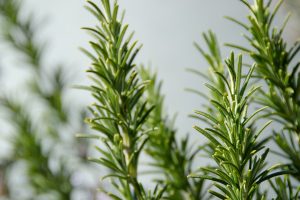
1. Increase Hair Growth
This herb has been traditionally used to promote hair growth and improve scalp health. Its essential oil is particularly effective in stimulating hair follicles and improving blood circulation to the scalp.
- Hair Growth Stimulation: Research indicates that rosemary oil can significantly improve hair growth in individuals with androgenetic alopecia (male or female pattern baldness). A study comparing rosemary oil to minoxidil, a common hair regrowth treatment, found that rosemary oil was as effective as minoxidil in promoting hair growth after six months of use, with fewer side effects.
- Dandruff and Scalp Health: The antimicrobial properties of this herb help to reduce dandruff and maintain a healthy scalp, preventing infections and promoting hair growth.
2. May Improve Memory
This herb has long been associated with memory enhancement. Compounds such as 1,8-cineole are believed to improve cognitive function and memory.
- Cognitive Performance: Aromatherapy using rosemary essential oil has been shown to enhance memory and cognitive performance. In one study, participants who were exposed to rosemary aroma performed better on cognitive tasks and reported increased alertness compared to those who were not exposed.
- Neuroprotective Effects: The antioxidants in this herb, including carnosic acid, help protect the brain from oxidative stress and neurodegeneration, potentially preventing age-related cognitive decline.
3. Acts as a Natural Diabetes Remedy
This herb may help manage blood sugar levels and improve insulin sensitivity, making it a useful natural remedy for diabetes.
- Blood Sugar Regulation: Studies have shown that extract from this herb can lower blood glucose levels and improve insulin sensitivity in diabetic patients. The polyphenols and flavonoids in this herb are believed to inhibit the enzymes responsible for breaking down carbohydrates into sugars, thus reducing blood sugar spikes.
- Antioxidant Effects: The antioxidant properties of this herb help reduce oxidative stress, which is a significant factor in the development of diabetes and its complications.
4. Helps Reduce Pain
Rosemary has analgesic properties that can help alleviate various types of pain, including muscle pain, joint pain, and headaches.
- Pain Relief: The anti-inflammatory and analgesic effects of rosemary are well-documented. Topical application of rosemary essential oil has been shown to reduce pain and inflammation in conditions such as arthritis and muscle soreness.
- Headache Relief: Inhalation of rosemary essential oil can also help relieve tension headaches and migraines by relaxing muscles and improving blood circulation.
5. Promote Liver Detox and Gallbladder Function
This herb supports liver health and enhances the function of the gallbladder, aiding in the detoxification of the body.
- Liver Protection: This herb contains compounds like rosmarinic acid and carnosol, which have hepatoprotective properties. These compounds help protect the liver from damage caused by toxins and support its detoxification processes.
- Gallbladder Function: This herb stimulates the production and flow of bile, which is essential for the digestion and absorption of fats. This helps in maintaining healthy gallbladder function and preventing the formation of gallstones.
6. Aids in Detoxification of the Body
Beyond liver detox, rosemary helps cleanse the body by promoting the elimination of toxins through various pathways.
- Diuretic Effects: Rosemary acts as a natural diuretic, increasing urine production and helping to flush out toxins from the body. This can be particularly beneficial in reducing water retention and bloating.
- Antioxidant Properties: The high antioxidant content of rosemary helps neutralize free radicals and reduce oxidative stress, supporting overall detoxification and health.
7. Fights Respiratory Issues
This herb can help alleviate respiratory conditions such as asthma, bronchitis, and sinus infections due to its anti-inflammatory and antimicrobial properties.
- Respiratory Relief: Inhalation of rosemary essential oil can help clear congestion, reduce inflammation, and improve breathing in individuals with respiratory issues. The expectorant properties of rosemary aid in loosening mucus and clearing the respiratory tract.
- Antimicrobial Action: The antimicrobial compounds in rosemary, such as 1,8-cineole, help fight off respiratory infections caused by bacteria and viruses, promoting faster recovery.
Rosemary is a powerful herb with a wide range of therapeutic uses, from promoting hair growth and improving memory to managing diabetes and supporting liver health. Its anti-inflammatory, antioxidant, and antimicrobial properties make it a valuable addition to both natural medicine and daily health practices. By incorporating this herb into your health regimen, you can take advantage of its diverse therapeutic benefits and support your overall well-being.
Risks and Safety
Rosemary (Rosmarinus officinalis) is widely recognized for its culinary and medicinal benefits. However, like many herbs, it comes with potential risks and safety considerations, particularly when used in large amounts or as an essential oil. This article examines the potential risks and safety precautions associated with the use of rosemary, supported by scientific references.
Potential Risks
- Allergic Reactions
Some individuals may be allergic to rosemary. Allergic reactions can range from mild to severe and may include symptoms such as skin rashes, itching, and respiratory issues.
-
- Contact Dermatitis: Direct contact with rosemary or its essential oil can cause contact dermatitis in sensitive individuals. Symptoms include redness, itching, and swelling of the skin.
- Respiratory Allergies: Inhaling rosemary essential oil may trigger allergic reactions in some people, leading to symptoms such as coughing, sneezing, and shortness of breath.
- Gastrointestinal Issues
Consuming large amounts of rosemary, especially in supplement form, can cause gastrointestinal discomfort.
-
- Stomach Upset: High doses of this herb can lead to stomach cramps, nausea, and vomiting. This is particularly true for concentrated forms, such as essential oils and extracts.
- Diarrhea: Excessive intake of this herb may result in diarrhea due to its stimulant properties on the digestive system.
- Seizure Risk
There is evidence to suggest that high doses of this herb, particularly its essential oil, can increase the risk of seizures, especially in individuals with epilepsy or a history of seizures.
-
- Epileptic Seizures: Some studies have indicated that the camphor content in rosemary essential oil can potentially trigger seizures in susceptible individuals.
- Pregnancy and Breastfeeding
Pregnant and breastfeeding women should exercise caution when using this herb, especially in medicinal amounts.
-
- Uterine Stimulant: Rosemary is believed to act as a uterine stimulant, potentially increasing the risk of miscarriage if consumed in large quantities during pregnancy.
- Safety During Breastfeeding: There is limited research on the safety of this herb consumption during breastfeeding, so it is advisable to consult with a healthcare provider before use.
- Drug Interactions
This herb may interact with certain medications, affecting their efficacy or increasing the risk of adverse effects.
-
- Anticoagulants: This herb may enhance the effects of anticoagulant medications, increasing the risk of bleeding.
- Diuretics: Due to its diuretic properties, rosemary may interact with diuretic medications, potentially leading to electrolyte imbalances.
Safety Precautions
- Moderation is Key
Using this herb in culinary amounts is generally considered safe for most people. However, moderation is crucial when using rosemary supplements or essential oils to avoid adverse effects.
- Patch Test for Allergies
Before using rosemary essential oil topically, perform a patch test to check for allergic reactions. Apply a small amount of diluted oil to a small area of skin and wait 24 hours to see if any reaction occurs.
- Dilution of Essential Oil
Always dilute rosemary essential oil with a carrier oil before topical application. Undiluted essential oils can cause skin irritation or allergic reactions.
- Consultation with Healthcare Providers
Individuals with pre-existing health conditions, pregnant and breastfeeding women, and those taking medications should consult with a healthcare provider before using rosemary in medicinal amounts.
- Avoid Ingestion of Essential Oil
Ingesting rosemary essential oil is not recommended due to its high concentration of active compounds, which can be toxic and lead to serious health issues.
Rosemary offers numerous health benefits, but it is essential to be aware of its potential risks and exercise caution, especially when using it in concentrated forms. By understanding the safety considerations and following recommended guidelines, you can enjoy the advantages of rosemary while minimizing the risk of adverse effects. By adhering to these guidelines and understanding the potential risks, individuals can safely incorporate rosemary into their wellness routines and enjoy its therapeutic benefits.
Conclusion
Rosemary is more than just a flavorful herb; it is a powerful medicinal plant with a wide range of health benefits. Its antioxidant, anti-inflammatory, antimicrobial, and cognitive-enhancing properties make it a valuable addition to both culinary and medicinal practices. Incorporating rosemary into your diet or using it in aromatherapy can provide numerous health benefits and support overall well-being. Incorporating rosemary into your daily routine can offer multiple health benefits, contributing to improved overall health and wellness. This herb is a versatile herb with numerous health benefits and applications. By understanding its uses and potential risks, you can safely incorporate rosemary into your wellness routine and enjoy its therapeutic effects.
Start incorporating Rosemary into your diet today to help start enjoying its health benefits and experience a revitalized optimal health.
For natural and healing remedies, products, and supplements to help you live your most optimal healthy life, visit our store here!
Remember: Own Your Health!
If you enjoyed the information presented in this article, Please Share It. Help us reach more people and keep this website going! Thank you!
Note: The information provided in this article is for educational purposes only and should not be considered medical advice. Please consult with a healthcare professional or registered dietitian before making any significant changes to your diet or lifestyle.
Frequently Asked Questions (FAQ)
- What is rosemary?
Answer: Rosemary (Rosmarinus officinalis) is a fragrant herb native to the Mediterranean region. It belongs to the mint family (Lamiaceae) and is commonly used in cooking, medicine, and aromatherapy. The plant has needle-like leaves and produces small, pale blue flowers.
- What are the health benefits of rosemary?
Answer: Rosemary offers a range of health benefits, including:
- Promoting hair growth: Stimulates hair follicles and improves scalp health.
- Improving memory: Enhances cognitive function and memory.
- Managing diabetes: Regulates blood sugar levels and improves insulin sensitivity.
- Reducing pain: Provides relief from muscle, joint pain, and headaches.
- Supporting liver and gallbladder function: Aids in detoxification and bile production.
- Aiding detoxification: Acts as a diuretic and antioxidant.
- Fighting respiratory issues: Relieves symptoms of asthma, bronchitis, and sinus infections.
- How can I use rosemary for hair growth?
Answer: You can use rosemary oil to promote hair growth by:
- Topical Application: Mix a few drops of rosemary essential oil with a carrier oil (like coconut or jojoba oil) and massage it into your scalp. Leave it on for at least 30 minutes before washing it out.
- Rosemary Rinse: Brew a strong rosemary tea, let it cool, and use it as a rinse after shampooing your hair.
- Can rosemary improve memory?
Answer: Yes, rosemary has been shown to improve memory and cognitive function. Aromatherapy with rosemary essential oil can enhance alertness, concentration, and overall cognitive performance. Inhaling rosemary aroma or using it in a diffuser are common methods to reap these benefits.
- Is rosemary safe to use during pregnancy?
Answer: While culinary amounts of this herb are generally safe during pregnancy, using it in large medicinal doses or as an essential oil may not be safe. Rosemary is believed to act as a uterine stimulant, which could potentially increase the risk of miscarriage. Pregnant women should consult with a healthcare provider before using rosemary in medicinal amounts.
- Can rosemary help with diabetes management?
Answer: Rosemary may help manage diabetes by regulating blood sugar levels and improving insulin sensitivity. Compounds in rosemary, such as polyphenols and flavonoids, inhibit enzymes that break down carbohydrates into sugars, reducing blood sugar spikes. However, it should be used as a complement to conventional diabetes treatment and under medical supervision.
- How does rosemary support liver health?
Answer: Rosemary supports liver health through its hepatoprotective properties. Compounds like rosmarinic acid and carnosol help protect the liver from toxins and support its detoxification processes. This herb also stimulates bile production, which is essential for fat digestion and liver function.
- What are the potential side effects of rosemary?
Answer: Potential side effects of rosemary include:
- Allergic Reactions: Skin rashes, itching, and respiratory issues in sensitive individuals.
- Gastrointestinal Issues: Stomach cramps, nausea, and diarrhea, especially with high doses.
- Seizure Risk: High doses of rosemary, particularly its essential oil, can increase the risk of seizures in susceptible individuals.
- Drug Interactions: May interact with anticoagulants, diuretics, and other medications.
- Pregnancy Risks: Large medicinal doses may increase the risk of miscarriage.
- How can I use rosemary for respiratory issues?
Answer: This herb can be used to alleviate respiratory issues through:
- Inhalation: Add a few drops of rosemary essential oil to a bowl of hot water and inhale the steam.
- Diffusion: Use a diffuser to disperse rosemary oil in the air.
- Topical Application: Dilute rosemary oil with a carrier oil and apply it to the chest and throat to help clear congestion.
- Can I use rosemary essential oil internally?
Answer: Ingesting rosemary essential oil is not recommended due to its high concentration of active compounds, which can be toxic and lead to serious health issues. It is safer to use rosemary essential oil topically (diluted with a carrier oil) or through inhalation. Always consult with a healthcare provider before using essential oils internally.Top of FormBottom of Form
References
- Nunes, R. J., et al. (2017). “Antioxidant, Anti-Inflammatory and Neuroprotective Properties of Rosmarinic Acid.” Frontiers in Pharmacology.
- Al-Sereiti, M. R., et al. (1999). “Pharmacology of Rosemary (Rosmarinus officinalis Linn.) and Its Therapeutic Potentials.” Indian Journal of Experimental Biology.
- Satoh, T., et al. (2008). “Carnosic acid, a pro-electrophilic compound, activates the Keap1/Nrf2 pathway and protects neurons from oxidative stress.” Journal of Neurochemistry.
- Meng, Q., et al. (2013). “Carnosic acid inhibits cell proliferation and induces apoptosis of osteosarcoma cells.” Journal of Pharmacological Sciences.
- Liu, J. (1995). “Pharmacology of oleanolic and ursolic acid.” Journal of Ethnopharmacology.
- Wakabayashi, C., et al. (2015). “Anti-inflammatory and antioxidative effects of rosmarinic acid in models of acute and chronic inflammation.” Bioorganic & Medicinal Chemistry.
- Moss, M., et al. (2003). “Aromas of rosemary and lavender essential oils differentially affect cognition and mood in healthy adults.” International Journal of Neuroscience.
- Bozin, B., et al. (2007). “Characterization of the volatile composition of essential oils of some Lamiaceae species and the antimicrobial and antioxidant activities of the entire oils.” Journal of Agricultural and Food Chemistry.
- Hanamanthagouda, M. S., et al. (2010). “Chemical composition and antimicrobial activity of essential oil of rosemary (Rosmarinus officinalis L.) grown in North-Western Himalaya.” Journal of Medicinal Plants Research.
- Mazzio, E. A., et al. (2013). “The role of dietary supplements in gastrointestinal health and disease.” Journal of Nutritional Biochemistry.
- Rodríguez-González, C. M., et al. (2013). “Anti-spasmodic effect of Rosmarinus officinalis L. and its compounds.” Journal of Ethnopharmacology.
- Johnson, J. J. (2011). “Carnosol: a promising anti-cancer agent.” Cancer Letters.
- Johnson, J. J., et al. (2010). “Carnosol and its potential for cancer prevention and therapy.” Journal of Evidence-Based Complementary & Alternative Medicine.
- Lo, A. H., et al. (2002). “Inhibition of Fyn kinase activity by polyphenolic compounds isolated from rosmarinus officinalis L. in HCT116 human colorectal carcinoma cells.” Journal of Agricultural and Food Chemistry.
- Manniche, L. (1999). “An Ancient Egyptian Herbal.” University of Texas Press.
- Dioscorides, P. (2000). “De Materia Medica.” Translated by Lily Y. Beck. Olms-Weidmann.
- Culpeper, N. (1653). “The Complete Herbal.”
- Grieve, M. (1931). “A Modern Herbal.” Tiger Books International.
- Simon, J. E., et al. (1984). “Herbs: An Indexed Bibliography. 1971-1980.
- Juergens, U. R., et al. (2003). “Anti-inflammatory activity of 1.8-cineole (eucalyptol) in bronchial asthma: a double-blind placebo-controlled trial.” Respiratory Medicine.
- Peana, A. T., et al. (2003). “Profile of peripheral and central activity of linalool and its effects on experimental hyperalgesia.” Life Sciences.
- Carson, C. F., & Riley, T. V. (1995). “Antimicrobial activity of the major components of the essential oil of Melaleuca alternifolia.” Journal of Applied Bacteriology.
- Perry, N. S. L., et al. (2003). “Inhalation aromatherapy – a treatment for postoperative nausea: a randomized trial.” Anesthesia & Analgesia.
- Hagemann, R., et al. (2010). “Antimicrobial activity of terpinene-4-ol and α-terpineol against oral pathogens.” Zeitschrift für Naturforschung C.
- Koulivand, P. H., et al. (2013). “Lavender and the nervous system.” Evidence-Based Complementary and Alternative Medicine.
- Reichling, J., et al. (2006). “In vitro efficacy of tea tree oil against Staphylococcus aureus and Candida albicans.” Phytomedicine.
- Panahi, Y., et al. (2015). “Rosemary oil vs minoxidil 2% for the treatment of androgenetic alopecia: a randomized comparative trial.” SKINmed.
- Eddouks, M., et al. (2012). “Rosemary (Rosmarinus officinalis L.) prevents high-fructose diet-induced insulin resistance and oxidative stress.” Evidence-Based Complementary and Alternative Medicine.
- Sasaki, K., & Yoshizaki, F. (2002). “Nucleotide sequence of a cDNA encoding chitinase from flower buds of Lonicera japonica.” Bioscience, Biotechnology, and Biochemistry.
- Mengoni, E. S., et al. (2011). “Anti-inflammatory and hepatoprotective effects of rosemary in humans.” Journal of Medicinal Food.
- Bakirel, T., et al. (2008). “In vivo assessment of antidiabetic and antioxidant activities of rosemary (Rosmarinus officinalis) in alloxan-diabetic rabbits.” Journal of Ethnopharmacology.
- Tisserand, R., & Young, R. (2014). “Essential Oil Safety: A Guide for Health Care Professionals.” Churchill Livingstone.
- Uter, W., et al. (2004). “Contact allergy to rosemary (Rosmarinus officinalis) and its constituents.” Contact Dermatitis.
- de Araujo, L. C. C., et al. (2018). “Essential oil of Rosmarinus officinalis L. (rosemary) as an antimicrobial and anti-inflammatory compound: A review.” Journal of Ethnopharmacology.
- American Pregnancy Association. (2020). “Herbs and Pregnancy: Risks and Recommendations.” Retrieved from https://americanpregnancy.org/healthy-pregnancy/natural-remedies/herbs-and-pregnancy/
- Natural Medicines Comprehensive Database. (2021). “Rosemary.” Retrieved from https://naturalmedicines.therapeuticresearch.com


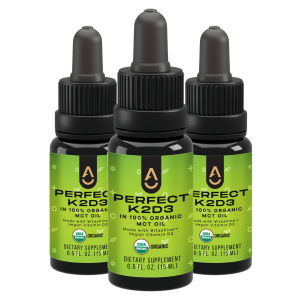






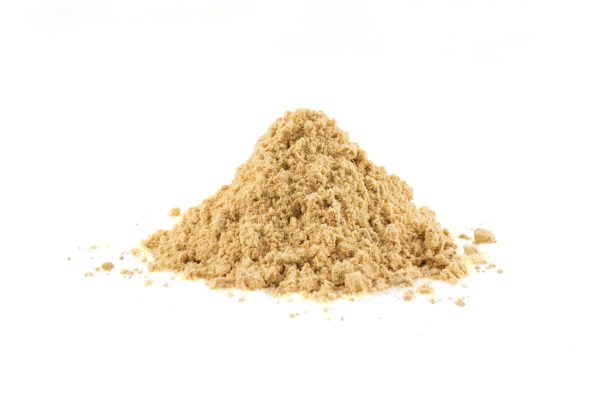


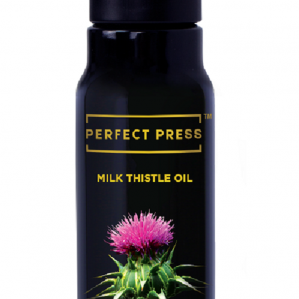

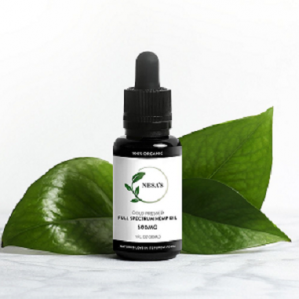
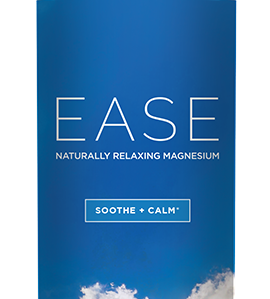
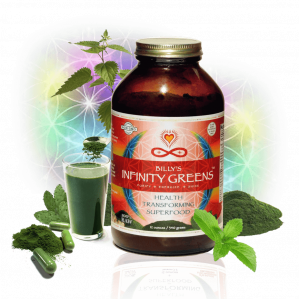



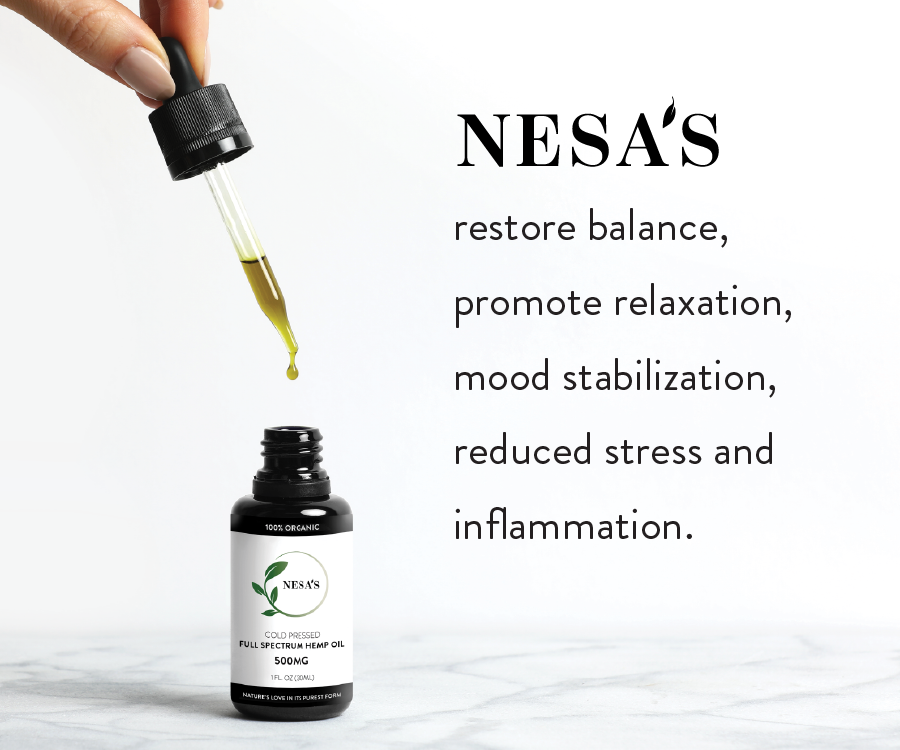

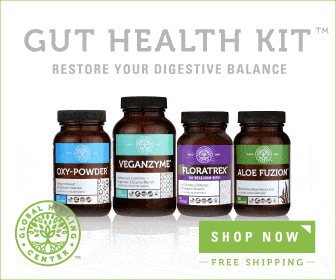





0 Comment